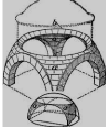Byzantine Architecture and Romanesque & Medieval Architecture
0.0(0)
Card Sorting
1/46
Earn XP
Description and Tags
Study Analytics
Name | Mastery | Learn | Test | Matching | Spaced |
|---|
No study sessions yet.
47 Terms
1
New cards
Chi-rho
Ornaments that symbolized Jesus Christ
2
New cards
East
Orientation of Byzantine churches
3
New cards
Theodosian Code
Doctrine that set clergy apart as a separate class & that they were exempted from taxes.
4
New cards
Iconoclastic Movement
The decree that banned the use of statues as means of representations of human/animal forms.
5
New cards
Constantinople (now known as Istanbul) & also called “New Rome”.
From Byzantium, Constantine renamed it to-
6
New cards
No good building stones & local materials such as clay for bricks & rubble for concrete were used.
Geological Influence
7
New cards
Climate Influence
Semi-tropical, thus flat roofs were used & combined with domes, to counteract the New Empire. They use shallow domes carried on pendentives
8
New cards
Iconoclastic Movement
(decree to ban the use of statues as means of representations either of human or animal forms)
9
New cards
Early Christian Basilica
was merged with the domical system of the Byzantine
10
New cards
Ways of life & corrupt conditions contributed greatly to the fall of Roman Empire.
Social and Political Influence
11
New cards
Theodosius II and Justinian
Prominent figures considered movers of this Architecture:
12
New cards
Theodosius II
built several military gates & towers (defense against the Goths & Huns) but cannot avoid the Moslems or the Islamic people.
13
New cards
Justinian
responsible for rebuilding of St. Sophia “Divine Wisdom” which now turned to a Moslem Mosque
14
New cards
From 5th to 11th century was one of the fluctuating & gradually declining fortunes
Byzantine Historical Influence
15
New cards
Justinian’s church of Hagia Sophia or Divine Wisdom, in Constantinople
Architecture in the 6th century is dominated by one building
16
New cards
▪ Simplicity in external design
▪ Richness in internal treatment
▪ Richness in internal treatment
ARCHITECTURAL CHARACTER
17
New cards
▪ Fusion of domical construction & classic columnar style
System of Construction
18
New cards
▪ Brick for walls & domes
▪ Marble/concrete for wall finishes
▪ Marble/concrete for wall finishes
Byzantine Principal Materials
19
New cards
▪ Absence of Campanile & atrium in their churches
▪ Grouping of small domes or semi-domes around a large central dome thus giving the dome a vertical impression
▪ Shallow domes carried on pendentives
▪ Extensive use of frescoes
▪ Marble revetments to cover whole interiors
▪ Grouping of small domes or semi-domes around a large central dome thus giving the dome a vertical impression
▪ Shallow domes carried on pendentives
▪ Extensive use of frescoes
▪ Marble revetments to cover whole interiors
Byzantine Features
20
New cards
Byzantine Plan
Byzantine Plan build church over burial place; orientation towards the east; most churches were of Greek Cross plan
21
New cards
Byzantine Walls
\
made of brick, internally encrusted with rich colored marbles & shining glass; rich application of mosaics & frescoes (almost of the exclusion of moldings & sculptured ornaments); external are plain with cement finish or bricks in different patterns
made of brick, internally encrusted with rich colored marbles & shining glass; rich application of mosaics & frescoes (almost of the exclusion of moldings & sculptured ornaments); external are plain with cement finish or bricks in different patterns
22
New cards
semi-circular headed & in some instances the horse-shoe arch began to appear in doorways because of Muslim architecture.
Byzantine Openings
23
New cards
used domes made of bricks, stones, concrete; developed 3 types of dome
Byzantine Roof
24
New cards
Simple dome
dome & pendentives were part of the same sphere
25
New cards
Compound dome
dome is not part of the same sphere as the pendentives, but rose independently above them or raised on a high drum pierced with windows; gives greater height
26
New cards
Melon/Onion dome
a bulbous dome consist of curved flutings which avoid the necessity of pendentives; common in Russia to ward off heavy snow
27
New cards
were taken from ancient buildings; used dosseret blocks
Columns
28
New cards
Cushion capital
Bird & basket capital
Wind swept acanthus capital
Bird & basket capital
Wind swept acanthus capital
used 3 capitals:
29
New cards
Cushion capital
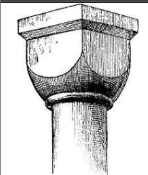
30
New cards
Bird & basket capital
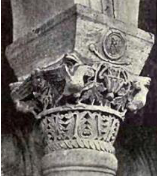
31
New cards
Wind swept acanthus capital
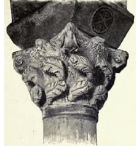
32
New cards
Ornament
extensive use of mosaic decoration, fresco paintings with human representation;
33
New cards
Endless knot
symbol for eternity
34
New cards
Peacock
symbol of immortal/eternal life
35
New cards
Chi-Rho
symbol of Jesus Christ, sacred monograms of Christ
36
New cards
Dome
decorated with head & shoulder of Christ
37
New cards
Pendentives
four evangelists
38
New cards
Apse
picture of virgin & child
39
New cards
Walls
representations of the saints & pictures of incidents in the life of Christ
40
New cards
Hagia Sophia / Sta. Sophia / Church of holy Wisdom, Turkey
the most important mosque in Constantinople with 107 multi-colored marble columns by **Architect Anthemius of Tralles & Isodorus of Miletus**; former Byzantine church, former \n Ottoman mosque, now a museum **(Ayasofya** \n **Museum)**
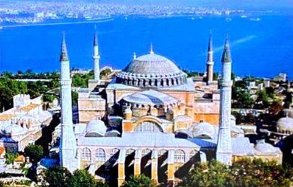
41
New cards
Basilica of St. Mark’s, Venice
prototype of a Greek cross church plan; built to receive the relics of the apostle Mark, brought from Alexandria
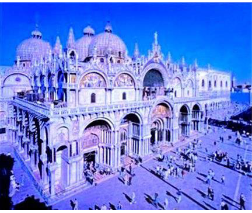
42
New cards
S. Vitale, Ravenna
founded by Justinian & to commemorate the recovery of Ravenna
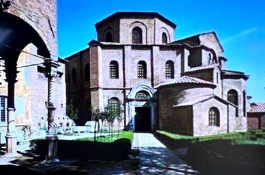
43
New cards
The Little Metropole Cathedral, Athens
smallest building in the world dignified by the name of a “cathedral”
44
New cards
Basilica of St. Peter, Rome
built by Constantine, dedicated to the martyrdom of St. Peter
45
New cards
Cushion Capital
a cubiform capital, the angles being progressively rounded off towards the lowest part.
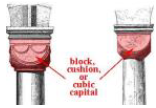
46
New cards
Dosseret Block/Super Abacus
a deep block sometimes placed above a Byzantine capital to support the wide voussoirs of the arch above
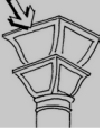
47
New cards
Pendentives
spherical triangle forming the transition from the circular plan of a dome to the polygonal plan of its supporting structure
